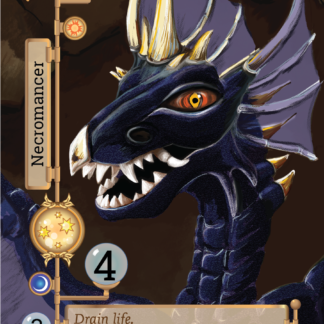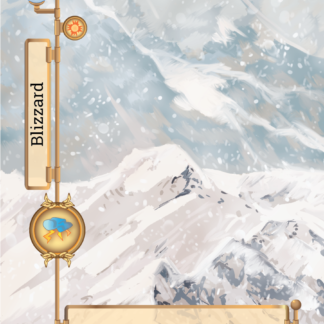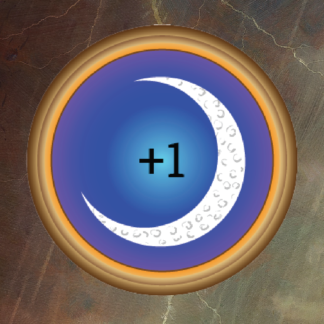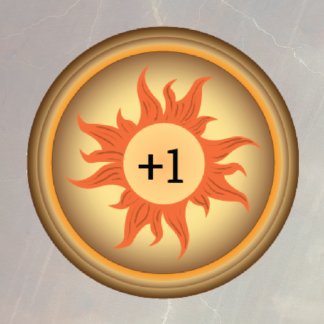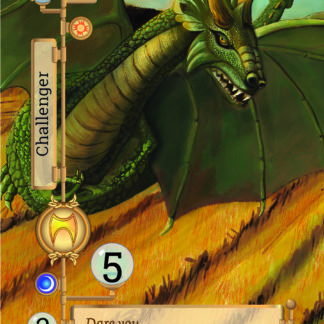Here is a copy of the rules for Storm Dragons.
Errata. This was omitted:
Final step of setup: Draw 5 cards from your draw pile to create your starting hand.
Rules FAQ
How many storms and/or dragons can I play?
On your turn, you may play one card: a storm or a dragon. A storm will go in the storm front at the head (on top) or tail (the bottom) of the storm pile. A dragon follows similar rules: place the dragon in the dragon flight at the head or the tail. Some dragons break this rule. When they do, follow the instructions on the card.
In the instructions it suggests that the large number on the dragon only counts when it’s the head of the group but in the BGG preview video it suggests that both numbers are in play on each of the dragon cards, not just the front one.
When you stack dragon or storm cards – with the left edge of the top card lined up on the pole – you will see the large numbers and small numbers only on the top card in your stack. The cards in back of that will only show the small numbers. You should only count numbers you can see. Further, you will only count the visible “day” numbers (top of the card) during the day. Or, you will count the “night” numbers (lower half of the card) during the night.
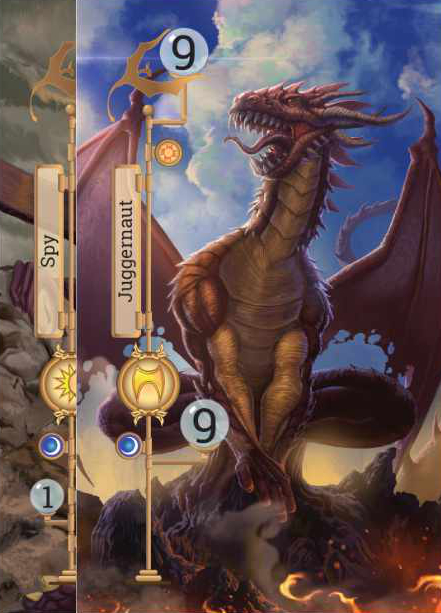
You say: “You may choose to rebuild” but I don’t see where rebuilding is actually explained.
Rebuild consists of a discard action and a play action. You discard as many cards as you want, then you draw up one fewer cards and add the new cards to your hand. For example, if you discard 3 cards, you draw 2. Then you play 1 card from your hand – one of the new ones, or not, your choice.
Further, it says “After the first player of the round has led a card, for the rest of the battle round…” but I believe you mean “After a player has CHALLENGED” or it seems that you’re immediately in battle every round.
A battle round is the time from when the first player leads a card until the last player has beaten all others and takes all storms and dragons that participated in the battle round.
My impression is that the idea is for each player to build up a good stack of storms to cast and a “flight” of dragons before they initiate a challenge.
Yes, this is the idea.
Is there a limit to how many storms / dragons you can have in front of you?
No limit.
In a challenge, does everyone compare strength at once?
No. The challenge is not you against the group, but you against each other player, in turn. I will try to describe it more clearly:
Challenge: On your turn you play a card and then you challenge (take the challenge coin and place it on top of your dragon flight). Add up all your points based on dragon and storm effects. Then add 1 point for issuing the challenge.
Now, each player, in turn, has a chance to beat your challenge. There are three possible outcomes:
- The first challenged player (to your left) may take a turn. If they can best your score, they win the challenge and you give them your dragons from this battle round.
- If they cannot best your score, they may choose not to play. They yield. Then they give you the dragons they have played in this battle round.
- The challenged player may take a turn. If they cannot best your score, you take their dragons from this battle round.
The last outcome doesn’t happen often in practice, but it would be permitted. For example, the person challenged might choose to play a spy to recover a super-valuable assassin and then yield their spy to you, the challenger.
If you have won the challenge with the first player, you proceed to challenge the next player in clockwise order. You do not change anything in your play area. Same storms, dragons and battle strength. But now you compare to that new challenger. If you win the next challenge, take the played dragons from the second challenger. If you lose, surrender your dragons.
Continue until you have challenged each of the other players.
If you lose and surrender your dragons, the challenge ends. Normal play continues for the players who are still in the battle. You are out and so is anyone who lost to you in the challenge.
Some thoughts on challenge: Sometimes challenge occurs after you and others have played several cards. This is something you try to encourage if you have strong dragons in your hand. However, sometimes you might want to challenge sooner when there are fewer dragons in play. You might make this choice if you want to take control and change the time of day in the next round. You might want to do it if someone else has a Queen, for example, and you want to get in there before she adds a bunch of storms and becomes unbeatable. When and how you challenge is one of the tactical choices that shapes your game. But it is also a strategic tool that gives you more control over the outcome of future turns.
Does the challenger choose day or night?
No. The person who leads chooses day or night when they lead the first card. The time of day they choose stays in play until someone changes it with a dragon or a storm, or until the battle round ends.
Can I choose day or night when I take control?
No. Day or night is fixed for a full battle round unless someone plays a card to change it.
When do you draw up to 5 cards in your hand again? Are battles inherently based on up to the five cards in your hand versus the five cards the other player puts down (or less, of course)?
At the end of a battle round, everyone draws 2 cards. At that point, anyone who does not have 5 cards, draws additional cards to get to 5. This means some players may have more than 5 cards.
Having more than 5 cards in hand is permitted. In fact, it is encouraged as a strategic choice. If your hand is weak in a given round, play as few cards as you can so you have more cards and a stronger hand (or more synergy between dragons and storms, for example) in the next round, or the one after that. Live to battle another day?
What happens if our scores tie on a challenge?
The person challenged must yield. Challenge is about control. If you cannot take control by having a larger battle strength number than the challenger, you cannot defeat the challenge.
What happens to the dragons from the person who *wins* the challenge?
They go into the winner’s victory pile.
What happens when we’ve gone through our 20 card deck?
If you have any cards in your discard pile, shuffle them and make a new draw pile.
When someone draws the last card from their draw pile and their discard pile is empty, the current round of battle becomes the last. Play to the end of the battle round. Any players who still have cards in their hand, their draw and/or discard piles will add those cards to their victory pile. Cards from the final battle will go to the winner of the round, as usual.
The Storm Caller says: “Take 1 [storm] from enemy storm front. Add to your storm front.” Does this mean I take a storm from an enemy and then I add a storm from my hand to my storm front?
No, I’m sorry. What it would say if we could fit it on the card is “Take 1 [storm] from an enemy storm front. Add [the storm you just took] to your storm front.”

